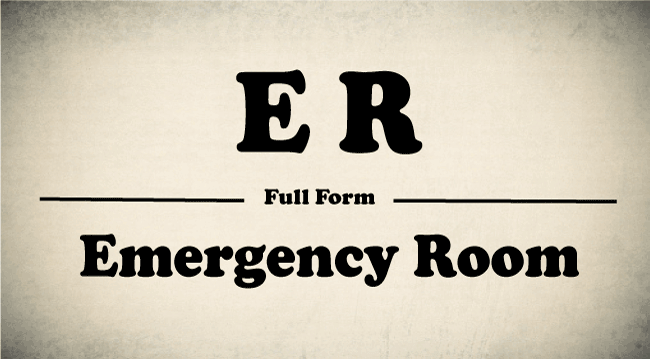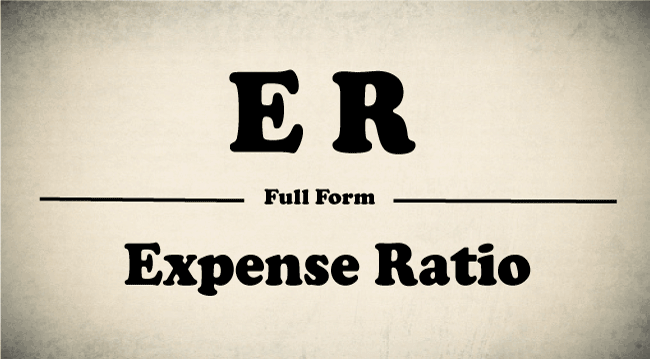What is the full form of ER(i) ER: EngineerER stands for Engineer. Er is a shorthand or abbreviation that engineers first used in India in the initial 1970s. The engineers began prefixing their names with 'Er' simultaneously as the physicians began using 'Dr'. 
In the 1970s and 1980s, not many students could take an engineering course; therefore, for those who could, it was seen as a significant accomplishment. There were few engineering institutions in the nation at the time, most of which were IITs. In addition, there were a few state government engineering universities where admission was challenging. Engineering and engineers have greatly aided in the development of our nation. However, the engineering frenzy has somewhat subsided due to the emergence of several subpar engineering institutions and also due to many students enrolling in engineering programmes who were not even worth engineering. Many engineers still add 'Er' to the front of their names nowadays. On social media, you can also quickly locate a lot of these folks. The majority of engineering students still receive decent employment and pay nowadays. In addition, you may witness engineers at work on several worthwhile projects all around you. Many of the nation's most successful individuals, like Raghuram Rajan, Arvind Kejriwal, Sundar Pichai, and others, also have engineering backgrounds. What is ER- Engineering course?Engineering is the word given to the act of creating something new. Engineering is typically a four-year programme in which learners can get a degree by concentrating on one of their preferred areas. The following are some well-known and significant engineering branches:
Mechanical Engineering Short FormThe most popular field of study for students at present date is mechanical engineering, one of the oldest engineering specialities. In such circumstances, mechanical engineering is frequently abbreviated anywhere, especially for students studying the subject or those applying for a new entry. Therefore, knowing the abbreviation for mechanical engineering will aid students in understanding a variety of concepts. There are several methods of writing mechanical engineering in short form, some of which are particularly well-known. Some examples are ME, MECH ENG, and MECH. Electrical Engineering Short FormOne of today's most in-demand engineering specialities, electrical engineering has a very bright future. Many students are interested in learning the shortened version of electrical engineering. In this case, the most well-known short form of electrical engineering is as follows:
The short form of Electrical and Electronics Engineering is EEE. Computer Science Engineering Short FormStudents must learn to use the abbreviation for Computer Science Engineering as it is the engineering field which is in demand nowadays, not only in India but across the world. The most well-known short forms of computer and computer science engineering are as follows:
Chemical Engineering Short FormChemical engineering is a branch of engineering that focuses on strategies for increasing output as well as the operating and designing of chemical facilities. Chemical engineers create cost-effective industrial processes that transform raw resources into usable goods. Chemical engineering effectively uses the concepts of chemistry, physics, arithmetic, biology, and economics to create, design, transport, and/or convert energy and materials. Chemical engineering or process engineering degrees are often held by chemical engineers. The most well-known short form of chemical engineering is as follows:
(ii) ER: Emergency RoomER stands for Emergency Room. A medical treatment facility that specializes in emergency medicine is known as an emergency department (ED), also recognized as an accident and emergency department (A&E), emergency room (ER), emergency ward (EW), or casualty department. Patients who come without an appointment on someone's recommendation or via an ambulance are given acute care in the ED. The emergency room is often located in authorized hospitals or primary care facilities. 
The department is required to give first care for a wide range of diseases and injuries since patient presence is unexpected. Some of these conditions could be life-threatening and demand prompt attention. For people without alternative access to healthcare, emergency rooms in many nations have become crucial entrance sites for them. Most hospitals have emergency rooms open around the clock; however, staffing levels may change to suit the patient load. History of Emergency RoomBy the late middle of the nineteenth century, railroads, municipalities, and workers' compensation plans were offering accident services in both Europe and the United States. Still, the first specialized trauma care facility opened its doors in the United States in 1911 at the University of Louisville Hospital in Louisville, Kentucky. Arnold Griswold, a physician, furthered its development in the 1930s. He also outfitted police and fire cars with medical equipment and taught officers to provide emergency treatment while travelling to the hospital. In modern hospitals, the emergency room is usually located in a separate area on the ground floor with a separate entrance. It is necessary to prioritize cases based on the clinical need for running the emergency room, as patients may present at any moment and with any complaints. Triage is the name of this procedure. Nomenclature of ER in EnglishWhen emergency medicine was acknowledged as a medical speciality, and hospitals and medical facilities created divisions of emergency medicine to offer services, emergency departments became utilized more frequently. The terms "emergency unit", "emergency centre", and "emergency ward" are other often used alternatives. Even though the term "accident and emergency" (A&E) is no longer used in the UK, it is still often used in many countries. Hong Kong continues to make use of it as well. Earlier words like "casualty" or "casualty department" were used formally in the past and are being used formally now. The term "emergency room", "emerg", or "ER" originated in North America when the department of surgery offered emergency services in a single hospital room. (iii) ER: Expense RatioER stands for Expense Ratio. The total percentage of the fund's assets used for management, administration, marketing, and all other expenditures is known as the expense ratio of a stock or asset fund. An annual expense ratio of 1% indicates that 1% of the stock's asset value will be utilized to pay expenses yearly. Brokerage commissions and sales loads are excluded from the expenditure ratio. 
When selecting a fund, expense ratios are crucial to take into account since they have a significant impact on results. The size of the fund (small funds sometimes have higher ratios since they distribute expenditures across fewer participants), sales taxes, and the style of management of the fund are all factors that affect the expense ratio. A domestic U.S. stock fund typically has an annual fee ratio of around 1%, while certain passively managed funds, such as index funds, have much lower rates. The "12b-1 fee", which indicates costs for fund advertising and marketing, is known as the one prominent element of the expense ratio for U.S. funds. According to Financial Industry Regulatory Authority Rules, 12b-1 fees are typically restricted to a highest of 1.00% per year (0.75% dividend and 0.25% shareholder servicing). The word "expense ratio" also acts as a critical performance indicator for a charitable organization. The phrase is occasionally employed in other situations as well. The Expense Ratio: How Is It Calculated?All expenses related to running and administering the fund are included in the expense ratio, including:
These costs are then divided by the fund's AUM to arrive at the expense ratio. For example, if a fund has $100 million in AUM and $1 million in expenses, the expense ratio would be 1%. Why Does the Expense Ratio Matter?The expense ratio is an important factor to consider when choosing a mutual fund or ETF because it can significantly impact an investor's returns over time. A higher expense ratio means that more of an investor's returns will go toward paying fees, and less will be available for investment growth. To illustrate this point, consider two hypothetical mutual funds with identical returns of 8% per year over a 30-year period. Fund B seems to have an expense ratio of 2%, compared to 1% for Fund A. Assuming an initial investment of $10,000, Fund A would grow to $53,682, while Fund B would only grow to $45,259. The difference in returns is due to the higher fees charged by Fund B. How to Compare Expense RatiosWhen comparing expense ratios, it is important to compare funds within the same category. For example, you should compare the expense ratios of large-cap stock funds, to other large-cap stock funds, rather than comparing them to bond funds or international stock funds. You should also consider other factors when comparing expense ratios, such as the fund's historical performance, investment strategy, and the experience of the fund manager. When selecting a mutual fund or ETF, a low-cost ratio is vital, but it is not the only thing to take into account. ConclusionWhile investing in mutual funds or ETFs, the expense ratio is a crucial consideration to take into account. It is the annual charge made by the fund to pay operational and management expenses. A higher expense ratio can significantly impact an investor's returns over time, so it is important to choose funds with low expense ratios. However, expense ratios should not be the only factor considered when choosing a fund, as other factors such as performance, investment strategy, and fund manager experience are also important to consider. ER in Non-Profit OrganizationThe ratio of programme expenditures to overall spending is referred to as the "programme expense ratio" in non-profit organizations. One of the leading financial metrics that charities and their supporters are concerned about is the programme expense ratio. For a non-profit organization, the total "support service expenditure ratio" and the "programme expense ratio" is 100%. It's common to think of charities as more effective if their programme expense ratio is higher and their customer support expense ratio is lower. As of 2009, Charity Navigator reported that the national median expenditure ratio for support services was 10% and that more than 75% of the organizations it rates on its website had an expense ratio of less than 30%.
Next TopicFull Form
|
 For Videos Join Our Youtube Channel: Join Now
For Videos Join Our Youtube Channel: Join Now
Feedback
- Send your Feedback to [email protected]
Help Others, Please Share










